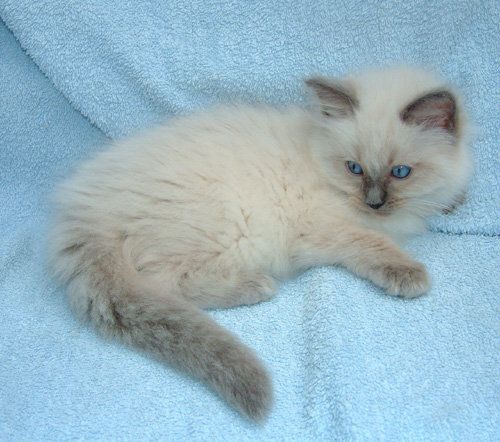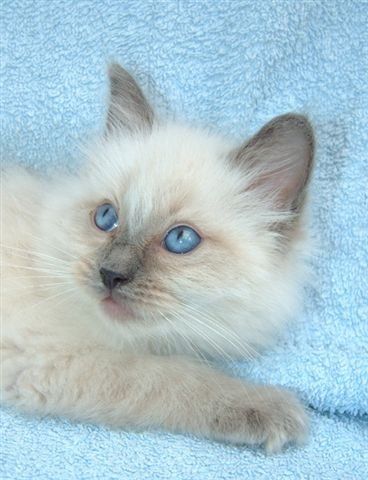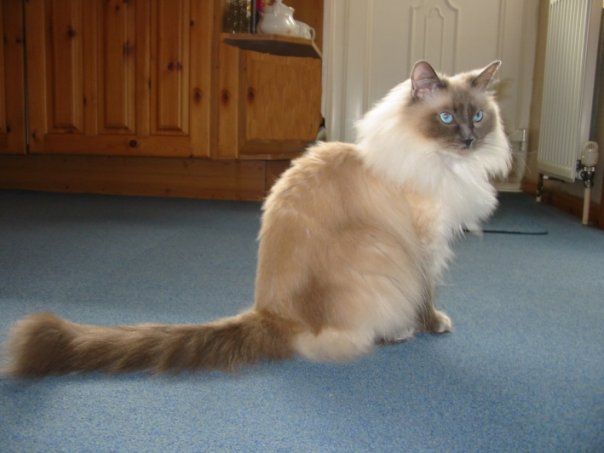Install the app
How to install the app on iOS
Follow along with the video below to see how to install our site as a web app on your home screen.
Note: This feature may not be available in some browsers.
Latest on MJJC
You are using an out of date browser. It may not display this or other websites correctly.
You should upgrade or use an alternative browser.
You should upgrade or use an alternative browser.
To Catlovers
- Thread starter MIST
- Start date
Ashtanga
Proud Member
Re: to catlovers














:wub:














:wub:
MIST
Proud Member
- Joined
- Jul 25, 2011
- Messages
- 5,411
- Points
- 83
2006 in Fairfax County they had problems with feral cats.
<iframe width="560" height="315" src="//www.youtube.com/embed/AV6jXAmKxKY" frameborder="0" allowfullscreen></iframe>
This year 2013 The Architects of Change for Cats conference will feature four Blueprint Sessions highlighting communities that have implemented innovative programs to save the lives of cats—and are already seeing the results and Fairfax County is one of them
<iframe width="560" height="315" src="//www.youtube.com/embed/AV6jXAmKxKY" frameborder="0" allowfullscreen></iframe>
This year 2013 The Architects of Change for Cats conference will feature four Blueprint Sessions highlighting communities that have implemented innovative programs to save the lives of cats—and are already seeing the results and Fairfax County is one of them
<iframe width="560" height="315" src="//www.youtube.com/embed/CiFuGENvCmQ" frameborder="0" allowfullscreen></iframe>Fairfax County, Va. – Fairfax County was one of the first shelters in the Washington, D.C. area to begin a TNR program. Almost 3,000 cats have gone through the program since its inception in 2008. Conference attendees will hear all about the program’s remarkable results. This spring, during the height of kitten season, the shelter had no kittens for the first time ever.
Ashtanga
Proud Member
Re: to catlovers









:wub:









:wub:
Last edited:
MIST
Proud Member
- Joined
- Jul 25, 2011
- Messages
- 5,411
- Points
- 83
<iframe width="560" height="315" src="//www.youtube.com/embed/s09ySUirmTc" frameborder="0" allowfullscreen></iframe>
Congratulations to Toronto street cats for helping so many cats and preventing cats suffering in the future.
Once I thought it was god for cats who lived outdoors if they were longhaired ,at least in the winter when it gets cold here.
But then I´ve learned about matted fur that makes the cat quite stiff and it hurts.
They can get wounds of it.
Congratulations to Toronto street cats for helping so many cats and preventing cats suffering in the future.
Once I thought it was god for cats who lived outdoors if they were longhaired ,at least in the winter when it gets cold here.
But then I´ve learned about matted fur that makes the cat quite stiff and it hurts.
They can get wounds of it.
Ashtanga
Proud Member
Re: to catlovers






 Marlon Brandon :wub:
Marlon Brandon :wub:


:wub:









:wub:
MIST
Proud Member
- Joined
- Jul 25, 2011
- Messages
- 5,411
- Points
- 83
Australian Cats and Foxes May Not Deserve Their Bad Rep
BALTIMORE, MARYLAND—Foxes and feral cats are wildly unpopular among Australian conservationists. The two animals are infamous for killing off the continent's native species, and they’ve been the targets of numerous government-backed eradication campaigns. But new research suggests that on Australian islands, these predators help control an even more destructive one: the black rat. As a result, eliminating cats and foxes could actually leave native mammals more vulnerable to predation, competition, and ultimately extinction.
Australia is ground zero for the modern biodiversity crisis. The continent has suffered more than a quarter of all recent mammal extinctions, and many other native species survive only as small populations on one or more of the country's thousands of islands. While habitat destruction has caused some extinctions, cats, foxes, and rats introduced around 1800 by British sailors have also played a major role, decimating native animals like bilbies and bandicoots—both small, ratlike marsupials found only in Australia. All of this has given large, nonnative predators like cats and foxes a bad name. "We hate them," biologist Emily Hanna of the Australian National University in Canberra declared here last month at the International Congress for Conservation Biology.
But to plan successful eradication campaigns, scientists must first understand how introduced predators interact with native fauna and with each other. For instance, cats and foxes are infamous for hunting birds and other wildlife, but they can also control rats, which are themselves ferocious killers of and competitors with native animals like the bandicoot. To date, few studies have looked at which type of predator is actually most likely to drive native animals extinct.
To determine which island invaders were doing the most damage, Hanna and her research adviser Marcel Cardillo created and analyzed what she calls a "ridiculously large" database comprising 934 living and extinct populations of 107 mammal species on 323 Australian islands between the early 1800s and today. For each island, the researchers recorded the presence or absence of various native mammals, and of rats, cats, foxes, and wild dogs known as dingoes, which some scientists believe help control invasive predators. The researchers also included other factors that might affect extinction risk, such as the size of the island and distance from the mainland. (Ecologists have found that island populations close to continents are more easily replenished, while more distant populations more easily go extinct.) Hanna then analyzed these data to find which factors most often correlated with native mammal extinctions.
The study yielded some surprising results: Native mammals were most likely to die off on islands that had rats, but not cats, foxes, or dingoes. Extinction rates on such islands ranged from 15% to 30%, but when cats, foxes, or dingoes were present, the rates plummeted to just over 10%—not much higher than on islands without any introduced predators, the scientists reported at the meeting and online this month in the journal Global Ecology and Biogeography.
The scientists also found that native mammals fared only slightly worse on islands with cats than on islands without them. Moreover, the presence of foxes and dingoes on islands seemed to give native species a slight overall boost. "I was really surprised," Hanna says. "I thought I'd made a big mistake." Hanna and Cardillo also found that rats' impact was most pronounced on small mammals—those weighing less than 2.7 kilograms—although the scientists are unsure how much of this influence was due to direct predation as opposed to competition for food and other resources or disease spread. Rats also had the greatest effect on islands within 2.1 kilometers of mainland Australia.
The study includes "a very nice, large data set, and a very well-constructed and complete analysis of the problem," says Phillip Cassey, an ecologist at the University of Adelaide Environment Institute. The results suggest that managers may need to simultaneously eliminate more than one predator to save rare animals from extinction, he adds; eradication efforts frequently focus on only one species. When it comes to planning such eradication campaigns on limited budgets, Cassey says, "analyses like [Hanna's], which can assist in prioritization, are going to be really important."
Despite the apparent benefit of cats and foxes, Hanna does not advocate introducing the animals to islands that don't already have them. But she says her results do raise questions about the strategy of trying to kill top predators off while ignoring rats. She now hopes to study whether her results also apply to birds and other groups of native species and to other predators.
http://news.sciencemag.org/biology/2013/08/australian-cats-and-foxes-may-not-deserve-their-bad-rep
BALTIMORE, MARYLAND—Foxes and feral cats are wildly unpopular among Australian conservationists. The two animals are infamous for killing off the continent's native species, and they’ve been the targets of numerous government-backed eradication campaigns. But new research suggests that on Australian islands, these predators help control an even more destructive one: the black rat. As a result, eliminating cats and foxes could actually leave native mammals more vulnerable to predation, competition, and ultimately extinction.
Australia is ground zero for the modern biodiversity crisis. The continent has suffered more than a quarter of all recent mammal extinctions, and many other native species survive only as small populations on one or more of the country's thousands of islands. While habitat destruction has caused some extinctions, cats, foxes, and rats introduced around 1800 by British sailors have also played a major role, decimating native animals like bilbies and bandicoots—both small, ratlike marsupials found only in Australia. All of this has given large, nonnative predators like cats and foxes a bad name. "We hate them," biologist Emily Hanna of the Australian National University in Canberra declared here last month at the International Congress for Conservation Biology.
But to plan successful eradication campaigns, scientists must first understand how introduced predators interact with native fauna and with each other. For instance, cats and foxes are infamous for hunting birds and other wildlife, but they can also control rats, which are themselves ferocious killers of and competitors with native animals like the bandicoot. To date, few studies have looked at which type of predator is actually most likely to drive native animals extinct.
To determine which island invaders were doing the most damage, Hanna and her research adviser Marcel Cardillo created and analyzed what she calls a "ridiculously large" database comprising 934 living and extinct populations of 107 mammal species on 323 Australian islands between the early 1800s and today. For each island, the researchers recorded the presence or absence of various native mammals, and of rats, cats, foxes, and wild dogs known as dingoes, which some scientists believe help control invasive predators. The researchers also included other factors that might affect extinction risk, such as the size of the island and distance from the mainland. (Ecologists have found that island populations close to continents are more easily replenished, while more distant populations more easily go extinct.) Hanna then analyzed these data to find which factors most often correlated with native mammal extinctions.
The study yielded some surprising results: Native mammals were most likely to die off on islands that had rats, but not cats, foxes, or dingoes. Extinction rates on such islands ranged from 15% to 30%, but when cats, foxes, or dingoes were present, the rates plummeted to just over 10%—not much higher than on islands without any introduced predators, the scientists reported at the meeting and online this month in the journal Global Ecology and Biogeography.
The scientists also found that native mammals fared only slightly worse on islands with cats than on islands without them. Moreover, the presence of foxes and dingoes on islands seemed to give native species a slight overall boost. "I was really surprised," Hanna says. "I thought I'd made a big mistake." Hanna and Cardillo also found that rats' impact was most pronounced on small mammals—those weighing less than 2.7 kilograms—although the scientists are unsure how much of this influence was due to direct predation as opposed to competition for food and other resources or disease spread. Rats also had the greatest effect on islands within 2.1 kilometers of mainland Australia.
The study includes "a very nice, large data set, and a very well-constructed and complete analysis of the problem," says Phillip Cassey, an ecologist at the University of Adelaide Environment Institute. The results suggest that managers may need to simultaneously eliminate more than one predator to save rare animals from extinction, he adds; eradication efforts frequently focus on only one species. When it comes to planning such eradication campaigns on limited budgets, Cassey says, "analyses like [Hanna's], which can assist in prioritization, are going to be really important."
Despite the apparent benefit of cats and foxes, Hanna does not advocate introducing the animals to islands that don't already have them. But she says her results do raise questions about the strategy of trying to kill top predators off while ignoring rats. She now hopes to study whether her results also apply to birds and other groups of native species and to other predators.
http://news.sciencemag.org/biology/2013/08/australian-cats-and-foxes-may-not-deserve-their-bad-rep
Ashtanga
Proud Member
Re: to catlovers




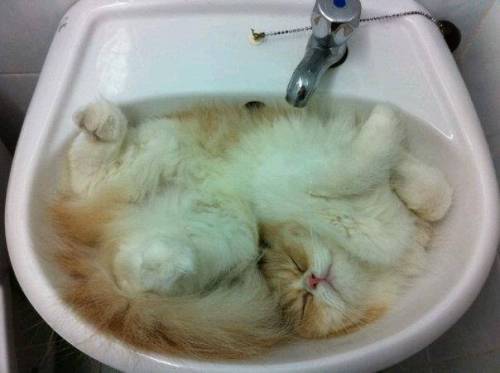


:wub:







:wub:
MJJsBADEraLady87
Proud Member
Re: to catlovers
Here's a pic of my kitty cat Cocoa who's possibly about 4 months oldish
she's been with me and my family for about 2 months now, she's not been spayed or declawed as of now, but needs it
she's more my cat since i've become more attached to her at this point
however, my mom has told me that she feels that she's a bit out of control, since we have no clue where she came from at this point
She plays with the other 3 cats a bit on the aggressive(playful aggressive) side and now she's doing some weird things not sure why, being by the litter box, she just started doing that, could be territorial who knows
http://i39.tinypic.com/dm2y5y.jpg
Here's a pic of my kitty cat Cocoa who's possibly about 4 months oldish
she's been with me and my family for about 2 months now, she's not been spayed or declawed as of now, but needs it
she's more my cat since i've become more attached to her at this point
however, my mom has told me that she feels that she's a bit out of control, since we have no clue where she came from at this point
She plays with the other 3 cats a bit on the aggressive(playful aggressive) side and now she's doing some weird things not sure why, being by the litter box, she just started doing that, could be territorial who knows
http://i39.tinypic.com/dm2y5y.jpg
MIST
Proud Member
- Joined
- Jul 25, 2011
- Messages
- 5,411
- Points
- 83
MJJsBADEraLady87;3899604 said:Here's a pic of my kitty cat Cocoa who's possibly about 4 months oldish
she's been with me and my family for about 2 months now, she's not been spayed or declawed as of now, but needs it
she's more my cat since i've become more attached to her at this point
however, my mom has told me that she feels that she's a bit out of control, since we have no clue where she came from at this point
She plays with the other 3 cats a bit on the aggressive(playful aggressive) side and now she's doing some weird things not sure why, being by the litter box, she just started doing that, could be territorial who knows
http://i39.tinypic.com/dm2y5y.jpg
She`s a beautiful cat.
How did you get her?
Cats need to be spayed but not declawed
Here´s an article who says declawing are no good for the cats
There are special furniture for cats to scratch at, and some to climb in too.It´s swedish but I´m sure there are sinilar in other countries too.Declawing Cats: Far Worse Than a Manicure
Declawing is a topic that arouses strong feelings. Some people believe it's cruel and unnecessary, while others think it has its place.
Why people declaw cats
People often mistakenly believe that declawing their cats is a harmless "quick fix" for unwanted scratching. They don't realize that declawing can make a cat less likely to use the litter box or more likely to bite.
People who are worried about being scratched, especially those with immunodeficiencies or bleeding disorders, may be told incorrectly that their health will be protected by declawing their cats. However, declawing is not recommended by infectious disease specialists. The risk from scratches for these people is less than those from bites, cat litter, or fleas carried by their cats.
Cats are usually about 8 weeks old when they begin scratching. It's the ideal time to train kittens to use a scratching post and allow nail trims. Pet caregivers should not consider declawing a routine prevention for unwanted scratching. Declawing can actually lead to an entirely different set of behavior problems that may be worse than shredding the couch.
What is declawing?
Too often, people think that declawing is a simple surgery that removes a cat's nails—the equivalent of having your fingernails trimmed. Sadly, this is far from the truth.
Declawing traditionally involves the amputation of the last bone of each toe. If performed on a human being, it would be like cutting off each finger at the last knuckle.
How is a cat declawed?
The standard method of declawing is amputating with a scalpel or guillotine clipper. The wounds are closed with stitches or surgical glue, and the feet are bandaged.
Another method is laser surgery, in which a small, intense beam of light cuts through tissue by heating and vaporizing it. However, it's still the amputation of the last toe bone of the cat and carries with it the same long-term risks of lameness and behavioral problems as does declawing with scalpels or clippers.
If performed on a human being, declawing would be like cutting off each finger at the last knuckle.
A third procedure is the tendonectomy, in which the tendon that controls the claw in each toe is severed. The cat keeps his claws, but can't control them or extend them to scratch. This procedure is associated with a high incidence of abnormally thick claw growth. Therefore, more frequent and challenging nail trims are required to prevent the cat's claws from snagging on people, carpet, furniture, and drapes, or from growing into the cat's paw pads.
Because of its complications, tendonectomy may lead to declawing anyway. Although tendonectomy is not actually amputation, a 1998 study published in the Journal of the American Veterinary Medical Association found the incidence of bleeding, lameness, and infection was similar between tendonectomy and declawing.
After effects
Medical drawbacks to declawing include pain, infection, tissue necrosis (tissue death), lameness, and back pain. Removing claws changes the way a cat's foot meets the ground and can cause pain similar to wearing an uncomfortable pair of shoes. There can also be a regrowth of improperly removed claws, nerve damage, and bone spurs.
For several days after surgery, shredded newspaper is typically used in the litter box to prevent litter from irritating declawed feet. This unfamiliar litter substitute, accompanied by pain when scratching in the box, may lead cats to stop using the litter box. Some cats may become biters because they no longer have their claws for defense.
What you can do
Scratching is normal cat behavior. It isn't done to destroy a favorite chair or to get even. Cats scratch to remove the dead husks from their claws, mark territory, and stretch their muscles. The Humane Society of the United States opposes declawing except for the rare cases when it is necessary for medical purposes, such as the removal of cancerous nail bed tumors.
Many countries feel so strongly about the issue that they have banned the procedure. But you don't have to let your cat destroy your house. Here's what you can do:
Keep his claws trimmed to minimize damage to household items.
Provide stable scratching posts and boards around your home. Offer different materials like carpet, sisal, wood, and cardboard, as well as different styles (vertical and horizontal). Use toys and catnip to entice your cat to use the posts and boards.
Ask your veterinarian about soft plastic caps (like Soft Paws®) that are glued to the cat's nails. They need to be replaced about every six weeks.
Use a special tape (like Sticky Paws®) on furniture to deter your cat from unwanted scratching.
Unnecessary procedures
Declawing and tendonectomies should be reserved only for those rare cases in which a cat has a medical problem that would warrant such surgery, such as the need to remove cancerous nail bed tumors. Declawing does not guarantee that a cat will not be taken to a shelter if other problem behaviors occur, such as biting or not using the litter box.
Declawing is an unnecessary surgery which provides no medical benefit to the cat. Educated pet parents can easily train their cats to use their claws in a manner that allows everyone in the household to live together happily.
http://www.humanesociety.org/animals/cats/tips/declawing.html
http://www.supercat.se/klostrad/
I have 8 cats , not declawed and they don´t scratch at the walls or other places where I don´t want them to.I don´t really know if declawing is banned here in Sweden but I never heard about a veterinarian who declaws cats here.
I have a doormat with coconutfiber and some of my cats love to scratch there and then I have some scratching furniture.
I know some do their own trees or things for cats to scratch on
Word Smith Sr
Proud Member
Re: to catlovers
Lol thanks for this one, he looks like a mafia family boss cat haha. "Making me wait in the cold and all, dude takes his time when we have to talk about a witness."
-------------------------------------------
Lol thanks for this one, he looks like a mafia family boss cat haha. "Making me wait in the cold and all, dude takes his time when we have to talk about a witness."
-------------------------------------------
Last edited:
Ashtanga
Proud Member
Re: to catlovers








:wub:








:wub:
Ashtanga
Proud Member
Re: to catlovers
 Madonna
Madonna

 Jane Fonda
Jane Fonda





:wub:








:wub:
Ashtanga
Proud Member
Re: to catlovers
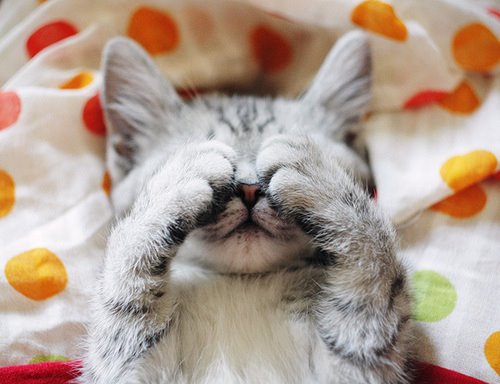







:wub:








:wub:
Ashtanga
Proud Member
Re: to catlovers
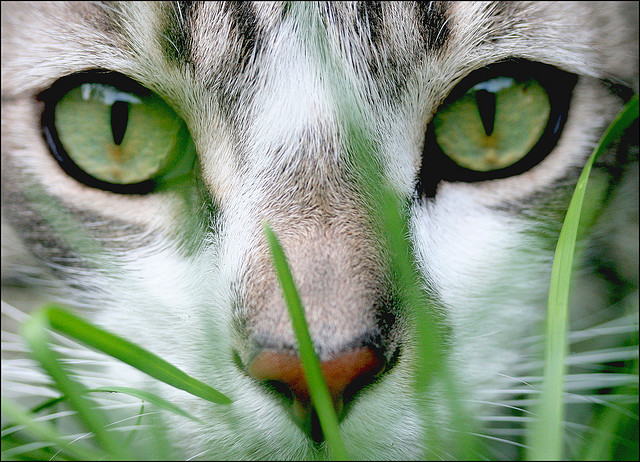







:wub:








:wub:
Ashtanga
Proud Member
Re: to catlovers






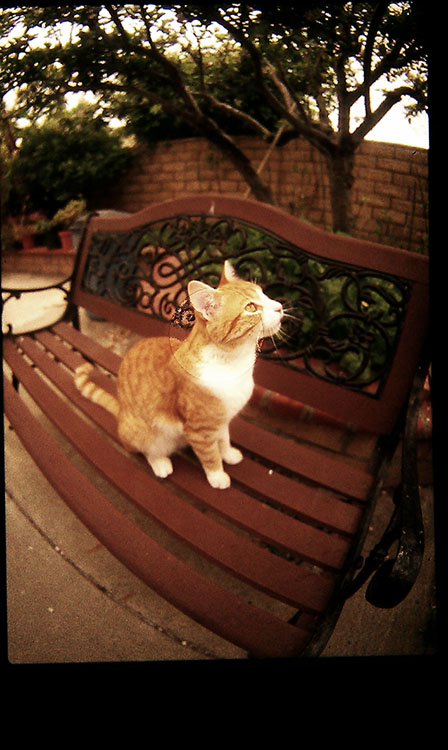


:wub:









:wub:
MIST
Proud Member
- Joined
- Jul 25, 2011
- Messages
- 5,411
- Points
- 83
A Love Story
A number of years ago, I received a letter from a rescuer who had spent the last 50 years trying to save animals. It was clear she loves animals very deeply. But she believes she is in the minority; believes that there is a crisis of uncaring, and because of that, believes animals have to die in shelters.
I spent years in rescue, working in animal rights, and prosecuting animal abuse as a Deputy District Attorney. I, too, once shared her view. While trying to make the world a better place for animals was gratifying, being immersed in work designed to combat animal abuse meant that I was reminded of it constantly and so I became myopic, believing that most people didn’t care about animals or their suffering.
I focused primarily on the bad things people did to animals, and became blind to the good. Most regrettably, I lost the ability to perceive how most people really felt about animals and with that, an accurate sense of the animal movement’s potential for success. But the growing success of the No Kill movement changed me. And it is growing.
Our success is spreading to every part of the country. And everywhere it is succeeding, it is succeeding because of people. In short, I learned that there was enough love and compassion for animals in every community to overcome the irresponsibility of the few and my heart swelled.
No Kill is a love story. It’s not about a romance, a friendship between two people, or how one human feels about another. It is about how 100 million individuals of one species—humans—feel about 165 million individuals from others. But it is a love story just the same. Three out of four Americans already believe it should be illegal for shelters to kill animals. Why? Because Americans truly love dogs and cats. Our job is to give voice to that love.
Conventional wisdom says animals have to die because people do not care enough about them. Conventional wisdom is wrong. Our collective experience in Tompkins County and then Reno and then Austin and now in hundreds of communities nationwide proves that the story of the eight million animals entering shelters in this nation does not have to be a tragedy. Shelters can respond humanely and compassionately without resorting to killing. These shelters can be temporary way stations for animals, providing good care and plenty of comfort until they find loving homes. And hundreds have. To do that elsewhere, shelters need to embrace the community.
Through my work in the No Kill movement, I have encountered people from all walks of life—every demographic imaginable: every age, class, culture, and political leaning—united, in spite of their other differences, by their love and concern for animals.
I have witnessed, time and time again, how the public rallies to the call for reform of their local shelter, and how, with their assistance, No Kill is now succeeding in various and diverse communities across this country.
These experiences have combined to erode my despair and replace it with great optimism. And I am constantly reminded of how much people truly love animals in countless little ways
Not too long ago, I was standing next to an older gentleman at a pharmacy when I asked the clerk for lancets for my diabetic cat. Lancets are used for diabetic testing. It’s the device that punctures the skin to extract blood for monitoring. When the pharmacist asked me what kind I wanted, I said “Give me the finest you have because it is for my cat.” The gentleman turned to me, pumped his fist in the air, and said to the pharmacist: “Yes, give him the finest, because nothing is too good for our pets!” I smiled at him and said, “That is true. Nothing is too good for our pets.”
But when I said “finest,” I actually meant “fine” as in the smallest needle point or highest gauge because the blood was drawn from the cat’s ear and I did not want it to be painful. Nonetheless, experiences like that, which I encounter frequently, remind me just how widespread our love for companion animals is as a society. And it is that love that gives me faith that we will fix our broken animal shelter system.
If you remember nothing else about the No Kill philosophy, remember this: Killing an animal is not an act of love. It is an act of violence.
No Kill is love.
Nathan Winograd
http://www.nathanwinograd.com/?page_id=166
A number of years ago, I received a letter from a rescuer who had spent the last 50 years trying to save animals. It was clear she loves animals very deeply. But she believes she is in the minority; believes that there is a crisis of uncaring, and because of that, believes animals have to die in shelters.
I spent years in rescue, working in animal rights, and prosecuting animal abuse as a Deputy District Attorney. I, too, once shared her view. While trying to make the world a better place for animals was gratifying, being immersed in work designed to combat animal abuse meant that I was reminded of it constantly and so I became myopic, believing that most people didn’t care about animals or their suffering.
I focused primarily on the bad things people did to animals, and became blind to the good. Most regrettably, I lost the ability to perceive how most people really felt about animals and with that, an accurate sense of the animal movement’s potential for success. But the growing success of the No Kill movement changed me. And it is growing.
Our success is spreading to every part of the country. And everywhere it is succeeding, it is succeeding because of people. In short, I learned that there was enough love and compassion for animals in every community to overcome the irresponsibility of the few and my heart swelled.
No Kill is a love story. It’s not about a romance, a friendship between two people, or how one human feels about another. It is about how 100 million individuals of one species—humans—feel about 165 million individuals from others. But it is a love story just the same. Three out of four Americans already believe it should be illegal for shelters to kill animals. Why? Because Americans truly love dogs and cats. Our job is to give voice to that love.
Conventional wisdom says animals have to die because people do not care enough about them. Conventional wisdom is wrong. Our collective experience in Tompkins County and then Reno and then Austin and now in hundreds of communities nationwide proves that the story of the eight million animals entering shelters in this nation does not have to be a tragedy. Shelters can respond humanely and compassionately without resorting to killing. These shelters can be temporary way stations for animals, providing good care and plenty of comfort until they find loving homes. And hundreds have. To do that elsewhere, shelters need to embrace the community.
Through my work in the No Kill movement, I have encountered people from all walks of life—every demographic imaginable: every age, class, culture, and political leaning—united, in spite of their other differences, by their love and concern for animals.
I have witnessed, time and time again, how the public rallies to the call for reform of their local shelter, and how, with their assistance, No Kill is now succeeding in various and diverse communities across this country.
These experiences have combined to erode my despair and replace it with great optimism. And I am constantly reminded of how much people truly love animals in countless little ways
Not too long ago, I was standing next to an older gentleman at a pharmacy when I asked the clerk for lancets for my diabetic cat. Lancets are used for diabetic testing. It’s the device that punctures the skin to extract blood for monitoring. When the pharmacist asked me what kind I wanted, I said “Give me the finest you have because it is for my cat.” The gentleman turned to me, pumped his fist in the air, and said to the pharmacist: “Yes, give him the finest, because nothing is too good for our pets!” I smiled at him and said, “That is true. Nothing is too good for our pets.”
But when I said “finest,” I actually meant “fine” as in the smallest needle point or highest gauge because the blood was drawn from the cat’s ear and I did not want it to be painful. Nonetheless, experiences like that, which I encounter frequently, remind me just how widespread our love for companion animals is as a society. And it is that love that gives me faith that we will fix our broken animal shelter system.
If you remember nothing else about the No Kill philosophy, remember this: Killing an animal is not an act of love. It is an act of violence.
No Kill is love.
Nathan Winograd
http://www.nathanwinograd.com/?page_id=166
Ashtanga
Proud Member
Re: to catlovers








:wub:








:wub:
MIST
Proud Member
- Joined
- Jul 25, 2011
- Messages
- 5,411
- Points
- 83
<iframe width="420" height="315" src="//www.youtube.com/embed/P1glbCIfcio" frameborder="0" allowfullscreen></iframe>
I think it´s so sweet that he took care of all these cats and got them spayed and neutered.
There are good people in the world.
I think it´s so sweet that he took care of all these cats and got them spayed and neutered.
There are good people in the world.
Ashtanga
Proud Member
Re: to catlovers









:wub:









:wub:
MIST
Proud Member
- Joined
- Jul 25, 2011
- Messages
- 5,411
- Points
- 83
Ginga’s story.
How best to deal with the feral cat situation problem.
By Pete Wedderburn on September 13, 2012 in Pet News
Are stray, feral cats a problem in your area? I’ve recently had an experience that clearly demonstrates the best way to deal with this perennial issue.
I was visiting the housing estate where I used to live, fifteen years ago. I was talking to a former neighbour, when a large distinctive looking ginger tom cat strolled by.
I recognised him: the upper half of his left ear was missing.
It was Ginga, a cat who I had last seen fifteen years previously when I lived in the area.
Ginga was one of the leaders of the feral cat colony that had begun to cause problems in the housing estate.
Initially there had only been half a dozen cats, but they had begun to breed uncontrollably.
At the start of the year, the three females had six kittens each: by the following spring, there was a core group of almost twenty adult cats who made their home in the area.
A few kindly residents were leaving out some cat food but there wasn’t enough.
The cats began to go hungry, and they soon started to annoy residents by ripping open bin bags, creating a mess, in their efforts to avoid starvation.
Something had to be done.
As the local vet, I decided to help.
I put together a plan and presented it to the residents’ committee.
Some people had already told me that they just wanted me to catch the cats and euthanase them but I explained that this would not solve the problem.
If this was done, within weeks or months, other feral cats from adjacent areas would notice that there was an area that had no cat population.
They’d move in to occupy the territory and soon enough, we’d be back to the same situation, with a rapidly expanding population of unowned cats.
The “catch and kill” policy has been proven many times to be ineffective.
The better answer, as I explained to the residents’ committee, was to carry out the type of Trap Neuter and Release (TNR) programme that I’ve discussed before in this column.
I asked each resident in the estate for a donation, and I used the funds to trap all of the cats, neuter or spay them, then release them back into the estate.
As it happened, when we trapped the cats, we found that a few of them were seriously ill, and we did have to euthanase those ones.
A few other cats were rehomed to farms and stables that had been looking for cats to carry out rodent control.
We ended up returning around a dozen cats, including Ginga.
We’d reckoned that the area could comfortably host this number of feral cats without causing difficulties to the cats nor to the residents.
The plan worked: the smaller number of feral cats fitted well into the area.
A few residents were happy to leave out food for them, and they did a good job of preventing rats and other rodents from causing a nuisance.
The bin-raiding stopped, and the number of cats remained stable because they were no longer able to reproduce.
At the time, I reckoned that we had solved the problem for around a decade: around then, the cats would begin to die from old age and there was a risk that a new bunch of feral cats might move in from other areas.
At that point, a second phase of Trap/Neuter/Release might be needed.
In fact, the original scheme has had an even longer effect than I’d expected. Fifteen years later, Ginga is still there, the proud ringleader of his bunch of cats..
How do I know that the cat is the same animal?
It’s obvious: the upper half of his left ear is missing.
Ear tip removal is an important part of a feral cat control programme: if every cat that’s neutered has an ear tip removed, it’s easy to spot the ones that have been done, and those that still need to be trapped.
I remember Ginga particularly well because the procedure was carried out by a new graduate vet who had not been involved with this type of programme before.
Instead of just snipping off the top 1cm of his ear, he had taken a more radical approach, removing twice as much.
It didn’t bother Ginga: he was deeply anaesthetised when it was done, and he would never look in a mirror, so he wouldn’t realise that he had a shorter ear than other cats. But as a result, Ginga has a unique appearance: he’ll never be mistaken for any other animal.
Ginga is elderly now: his vision is dimming and as he’s become more reliant on humans, he’s become tamer.
He’s had a good life, and along with his extended family, he’s done a good job of maintaining a pleasant environment in the housing estate.
Alan Rossiter, the 2012 President of Veterinary Ireland and a vet in practice in Greystones, Co. Wicklow adds the following:
Veterinary Ireland actively promotes Trap-Neuter-Return (TNR) as the most effective and most humane way of dealing with the feral cat situation, and, as opposed to paying a pest control company to come in, trap and kill the cats, we encourage any organisation that need to deal with their feral cat ‘problem’ to employ TNR as their method of choice. Compared to ‘Trap and Kill’, the TNR method is more humane, works better, is often cheaper and portrays an image of a caring and compassionate company putting animal welfare at the forefront of their policy of social corporate responsibility.
As a positive example I worked with Tesco in Kilcoole, Co. Wicklow a few years ago where we trapped the few feral cats that where there, neutered them, found homes for 2 relatively tame little kittens and returned the remainder to the store.
There remained this small, healthy, stable population of cats doing a useful job. Not only that but my fee to do this was actually cheaper than it would have cost the store to engage a pest control company to trap and dispose of the cats - which in any event would only have resulted in new, feral cats coming back and presenting the same problem all over again several months later. I congratulate the local Tesco manager for agreeing to use this as their method of cat-control, as opposed to taken the ‘easy option’ of calling in a pest control company. It is, as they say, a no-brainer and I sincerely hope all supermarkets, hotels, hospitals, restaurants, resident’s organisations, etc. can see that this small trial I did with Tesco, and Ginga’s story so well told by Pete, are great examples of the way to go.
http://www.lovemypet.ie/ginga/
How best to deal with the feral cat situation problem.
By Pete Wedderburn on September 13, 2012 in Pet News
Are stray, feral cats a problem in your area? I’ve recently had an experience that clearly demonstrates the best way to deal with this perennial issue.
I was visiting the housing estate where I used to live, fifteen years ago. I was talking to a former neighbour, when a large distinctive looking ginger tom cat strolled by.
I recognised him: the upper half of his left ear was missing.
It was Ginga, a cat who I had last seen fifteen years previously when I lived in the area.
Ginga was one of the leaders of the feral cat colony that had begun to cause problems in the housing estate.
Initially there had only been half a dozen cats, but they had begun to breed uncontrollably.
At the start of the year, the three females had six kittens each: by the following spring, there was a core group of almost twenty adult cats who made their home in the area.
A few kindly residents were leaving out some cat food but there wasn’t enough.
The cats began to go hungry, and they soon started to annoy residents by ripping open bin bags, creating a mess, in their efforts to avoid starvation.
Something had to be done.
As the local vet, I decided to help.
I put together a plan and presented it to the residents’ committee.
Some people had already told me that they just wanted me to catch the cats and euthanase them but I explained that this would not solve the problem.
If this was done, within weeks or months, other feral cats from adjacent areas would notice that there was an area that had no cat population.
They’d move in to occupy the territory and soon enough, we’d be back to the same situation, with a rapidly expanding population of unowned cats.
The “catch and kill” policy has been proven many times to be ineffective.
The better answer, as I explained to the residents’ committee, was to carry out the type of Trap Neuter and Release (TNR) programme that I’ve discussed before in this column.
I asked each resident in the estate for a donation, and I used the funds to trap all of the cats, neuter or spay them, then release them back into the estate.
As it happened, when we trapped the cats, we found that a few of them were seriously ill, and we did have to euthanase those ones.
A few other cats were rehomed to farms and stables that had been looking for cats to carry out rodent control.
We ended up returning around a dozen cats, including Ginga.
We’d reckoned that the area could comfortably host this number of feral cats without causing difficulties to the cats nor to the residents.
The plan worked: the smaller number of feral cats fitted well into the area.
A few residents were happy to leave out food for them, and they did a good job of preventing rats and other rodents from causing a nuisance.
The bin-raiding stopped, and the number of cats remained stable because they were no longer able to reproduce.
At the time, I reckoned that we had solved the problem for around a decade: around then, the cats would begin to die from old age and there was a risk that a new bunch of feral cats might move in from other areas.
At that point, a second phase of Trap/Neuter/Release might be needed.
In fact, the original scheme has had an even longer effect than I’d expected. Fifteen years later, Ginga is still there, the proud ringleader of his bunch of cats..
How do I know that the cat is the same animal?
It’s obvious: the upper half of his left ear is missing.
Ear tip removal is an important part of a feral cat control programme: if every cat that’s neutered has an ear tip removed, it’s easy to spot the ones that have been done, and those that still need to be trapped.
I remember Ginga particularly well because the procedure was carried out by a new graduate vet who had not been involved with this type of programme before.
Instead of just snipping off the top 1cm of his ear, he had taken a more radical approach, removing twice as much.
It didn’t bother Ginga: he was deeply anaesthetised when it was done, and he would never look in a mirror, so he wouldn’t realise that he had a shorter ear than other cats. But as a result, Ginga has a unique appearance: he’ll never be mistaken for any other animal.
Ginga is elderly now: his vision is dimming and as he’s become more reliant on humans, he’s become tamer.
He’s had a good life, and along with his extended family, he’s done a good job of maintaining a pleasant environment in the housing estate.
Alan Rossiter, the 2012 President of Veterinary Ireland and a vet in practice in Greystones, Co. Wicklow adds the following:
Veterinary Ireland actively promotes Trap-Neuter-Return (TNR) as the most effective and most humane way of dealing with the feral cat situation, and, as opposed to paying a pest control company to come in, trap and kill the cats, we encourage any organisation that need to deal with their feral cat ‘problem’ to employ TNR as their method of choice. Compared to ‘Trap and Kill’, the TNR method is more humane, works better, is often cheaper and portrays an image of a caring and compassionate company putting animal welfare at the forefront of their policy of social corporate responsibility.
As a positive example I worked with Tesco in Kilcoole, Co. Wicklow a few years ago where we trapped the few feral cats that where there, neutered them, found homes for 2 relatively tame little kittens and returned the remainder to the store.
There remained this small, healthy, stable population of cats doing a useful job. Not only that but my fee to do this was actually cheaper than it would have cost the store to engage a pest control company to trap and dispose of the cats - which in any event would only have resulted in new, feral cats coming back and presenting the same problem all over again several months later. I congratulate the local Tesco manager for agreeing to use this as their method of cat-control, as opposed to taken the ‘easy option’ of calling in a pest control company. It is, as they say, a no-brainer and I sincerely hope all supermarkets, hotels, hospitals, restaurants, resident’s organisations, etc. can see that this small trial I did with Tesco, and Ginga’s story so well told by Pete, are great examples of the way to go.
http://www.lovemypet.ie/ginga/
Ashtanga
Proud Member
Re: to catlovers


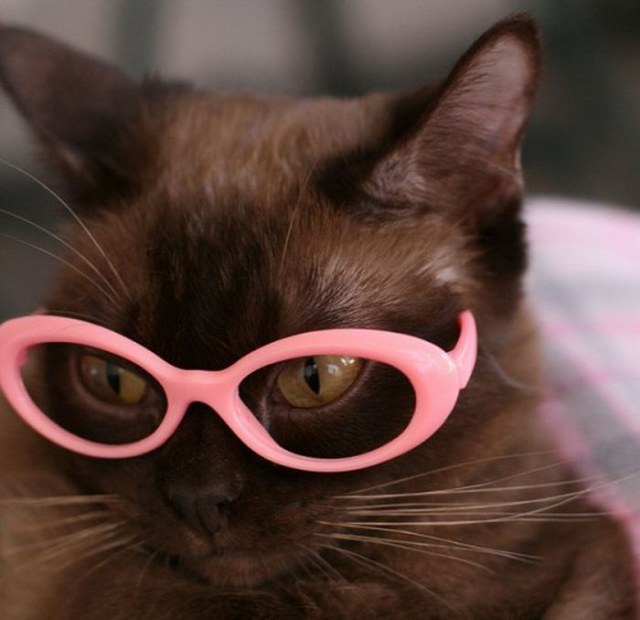





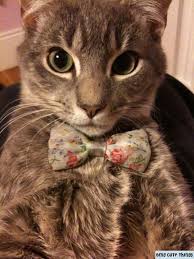



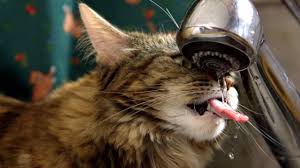

:wub:








:wub:
cottoncandy
Proud Member
- Joined
- Aug 12, 2012
- Messages
- 86
- Points
- 8
Re: to catlovers


Ashtanga
Proud Member
Re: to catlovers








:wub:








:wub:

